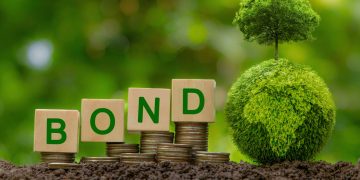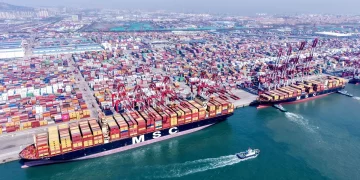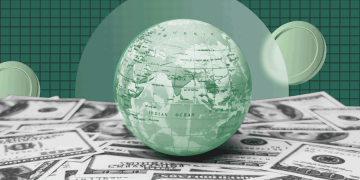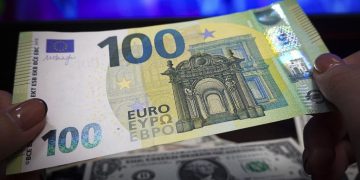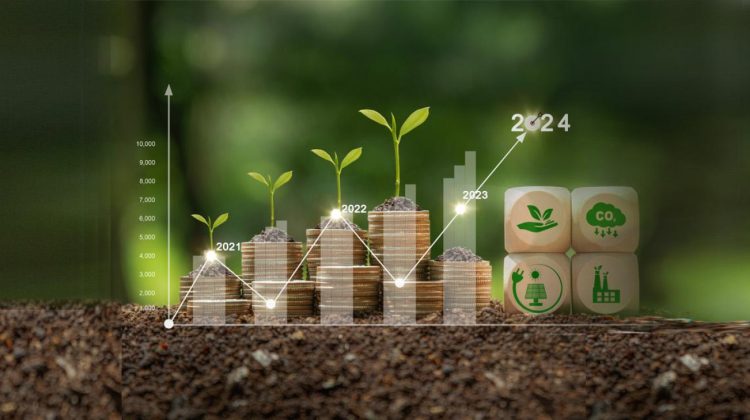Introduction: The Rise of Green Finance in Europe and the EU’s Role in Promoting Sustainable Investment
In recent years, green finance has emerged as a central theme in global investment strategies. As climate change concerns intensify and governments seek to meet ambitious sustainability goals, the financial sector is increasingly aligning itself with environmental and social objectives. Europe, particularly the European Union (EU), is at the forefront of this green finance revolution. With policies and initiatives aimed at driving sustainability, the EU is shaping the future of global finance by encouraging investments that support environmental, social, and governance (ESG) goals.
Green finance in Europe is not just about funding renewable energy projects or mitigating environmental risks. It encompasses a wide range of sustainable financial products, including green bonds, ESG funds, and sustainable infrastructure projects. The EU’s commitment to sustainability is evident in its comprehensive European Green Deal, which aims to make the region the first climate-neutral continent by 2050.
In this article, we will explore the rise of green finance in Europe, the EU’s green policies, investment opportunities, challenges, and the outlook for Europe’s role in leading the global green finance movement.
EU Green Deal: How the European Green Deal and Its Policies Are Influencing Environmental, Social, and Governance (ESG) Investments
The European Green Deal, unveiled in December 2019, is the cornerstone of the EU’s strategy to become carbon-neutral by 2050. This ambitious policy initiative aims to decarbonize industries, protect biodiversity, promote clean energy, and create green jobs. Central to the Green Deal is the concept of sustainable finance, which seeks to channel capital into projects that contribute to environmental sustainability and social well-being.
Several key policies and frameworks within the EU Green Deal are directly influencing ESG investments:
- Sustainable Finance Action Plan: The EU’s Sustainable Finance Action Plan, launched in 2018, is a framework designed to integrate sustainability into the financial sector. It aims to direct investments towards projects that support environmental goals, while creating financial products that meet clear ESG criteria. The action plan includes initiatives such as the EU Taxonomy, which classifies economic activities that contribute to environmental sustainability.
- EU Green Taxonomy: The EU Green Taxonomy is a classification system that identifies which economic activities can be considered environmentally sustainable. It is intended to provide transparency and help investors make informed decisions. The Taxonomy sets clear criteria for activities such as renewable energy production, energy efficiency, and sustainable agriculture, enabling investors to align their portfolios with sustainability goals.
- Green Bond Standards: The EU has introduced Green Bond Standards to ensure the integrity and transparency of the green bond market. These standards set out guidelines for the issuance and reporting of green bonds, making it easier for investors to assess the environmental impact of their investments.
- Climate Finance Commitments: Under the European Green Deal, the EU has committed to increasing its climate finance initiatives, particularly for developing countries. This involves using public funds to leverage private investments in climate projects, helping to finance the global transition to a low-carbon economy.
These policies collectively make the EU an attractive destination for green investment, ensuring that capital is directed toward projects that align with the bloc’s sustainability and climate goals.

Investment Opportunities: A Look at Sectors Benefiting from the EU’s Push for Sustainability
As Europe accelerates its green finance initiatives, a number of sectors stand to benefit from the surge in sustainable investment. Some of the most promising areas for green investment in Europe include:
- Renewable Energy: The EU is committed to reducing its reliance on fossil fuels and ramping up the deployment of renewable energy sources. The European Green Deal calls for a massive expansion of solar, wind, and hydropower capacity. With energy demand rising and global efforts to reduce carbon emissions intensifying, the renewable energy sector presents a major growth opportunity for investors. In particular, offshore wind farms and solar power projects in regions like Northern Europe and Southern Europe are receiving significant funding. As governments provide incentives for renewable energy infrastructure, private investors are increasingly looking at green energy companies as part of their portfolios.
- Green Bonds: The green bond market is one of the most visible manifestations of the green finance movement. Green bonds are debt instruments issued by governments or corporations to fund projects with positive environmental impacts, such as renewable energy infrastructure or energy-efficient buildings. The EU’s Green Bond Standard is helping to establish credibility in the market and attract institutional investors. In recent years, European countries such as France, Germany, and the Netherlands have issued significant amounts of green bonds to finance the transition to a low-carbon economy. Investors are flocking to these products as they align financial returns with ESG objectives.
- Sustainable Agriculture: The EU has placed a strong emphasis on promoting sustainable agriculture as part of its Green Deal. The Farm to Fork Strategy, which is part of the Green Deal, aims to make the food system fair, healthy, and environmentally-friendly. This includes initiatives to reduce the use of pesticides, promote organic farming, and incentivize agricultural innovation in line with sustainability goals. Companies involved in organic farming, agtech, and sustainable food production are attracting significant investment as consumer demand for eco-friendly and ethically produced food continues to rise.
- Green Infrastructure: Another significant area of investment is green infrastructure, which includes projects aimed at improving energy efficiency in buildings, promoting sustainable transport (such as electric vehicles and public transportation), and developing eco-friendly urban infrastructure. The EU has committed to upgrading its infrastructure to be more energy-efficient, which presents substantial investment opportunities in sustainable cities and smart infrastructure.
- Sustainable Finance Funds and ESG ETFs: As institutional investors increasingly look for ways to align their portfolios with sustainability goals, funds that focus on ESG criteria are seeing growing demand. ESG exchange-traded funds (ETFs) and sustainable mutual funds that invest in companies with strong environmental, social, and governance practices are benefiting from both retail and institutional interest.
Challenges and Risks: Addressing the Concerns Around Greenwashing, Regulatory Inconsistencies, and Market Volatility
Despite the exciting opportunities, green finance in Europe faces several challenges and risks:
- Greenwashing: Greenwashing occurs when companies or financial products claim to be environmentally friendly but do not deliver on their sustainability promises. With the growing popularity of ESG investing, there is an increasing risk of companies overstating their environmental credentials to attract investors. The EU’s efforts to regulate green finance, including the EU Taxonomy, aim to address greenwashing by setting clear criteria for what constitutes a sustainable investment.
- Regulatory Inconsistencies: While the EU has made significant strides in creating a uniform regulatory framework for green finance, there are still discrepancies across member states. Each country has its own regulatory environment, which can create challenges for investors trying to navigate the green finance landscape. This inconsistency could slow the pace of investment and hinder the development of green finance in some areas.
- Market Volatility: Like any investment, green finance is not immune to market fluctuations. While renewable energy and green bonds are expected to offer stable long-term returns, they can still be affected by broader economic conditions. Additionally, political changes, such as the potential rollback of green policies in certain countries, could lead to volatility in green asset prices.
Outlook: Can Europe Maintain Its Leadership in Green Finance, or Will Other Regions Catch Up?
Europe has firmly positioned itself as the global leader in green finance, thanks to its bold policies and initiatives such as the European Green Deal and the EU Taxonomy. The continent’s commitment to sustainability and its focus on attracting green investments has made it a hub for ESG-driven capital.
However, other regions are rapidly catching up. Countries in Asia, particularly China, are making significant strides in promoting green finance. China is not only the world’s largest emitter of greenhouse gases but also a leader in the development of clean energy technologies. The United States has also taken significant steps under the Biden administration, pushing for greater investments in renewable energy and ESG initiatives.
Despite the growing competition, Europe’s established regulatory frameworks, strong market infrastructure, and commitment to sustainability ensure that the region will remain a global leader in green finance. However, the EU will need to continue strengthening its green finance policies, address concerns like greenwashing, and ensure consistent regulations across member states to maintain its position.
Conclusion
Europe is leading the charge in green finance, driven by the European Green Deal and the EU Taxonomy. With investments flowing into renewable energy, green bonds, sustainable agriculture, and green infrastructure, the continent offers exciting opportunities for investors focused on sustainability. However, challenges such as greenwashing, regulatory inconsistencies, and market volatility remain. As other regions catch up, Europe must continue to refine its green finance framework and reinforce its position as the world’s sustainable finance hub.


